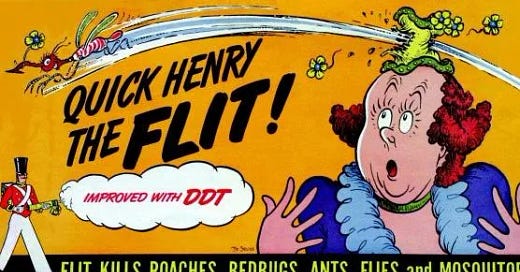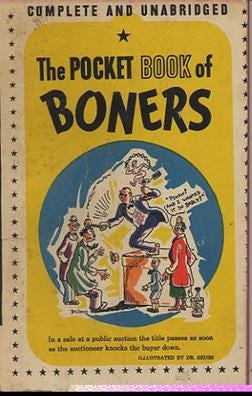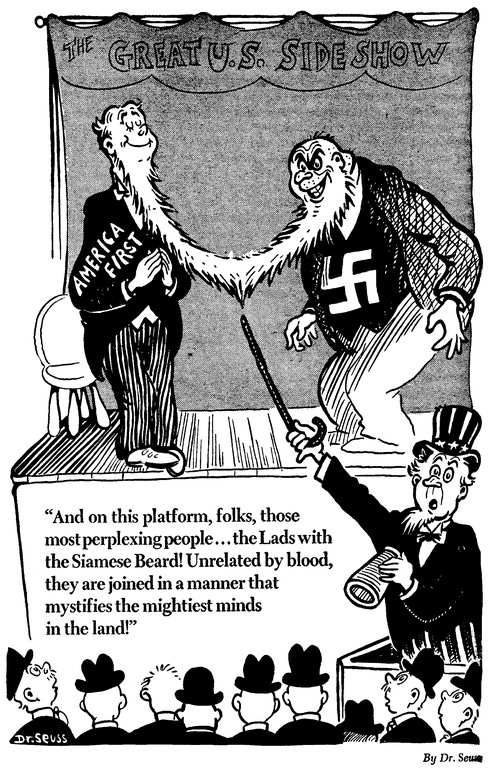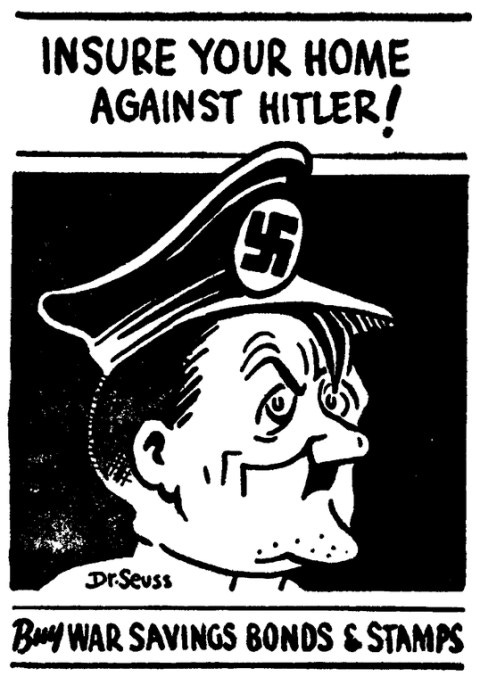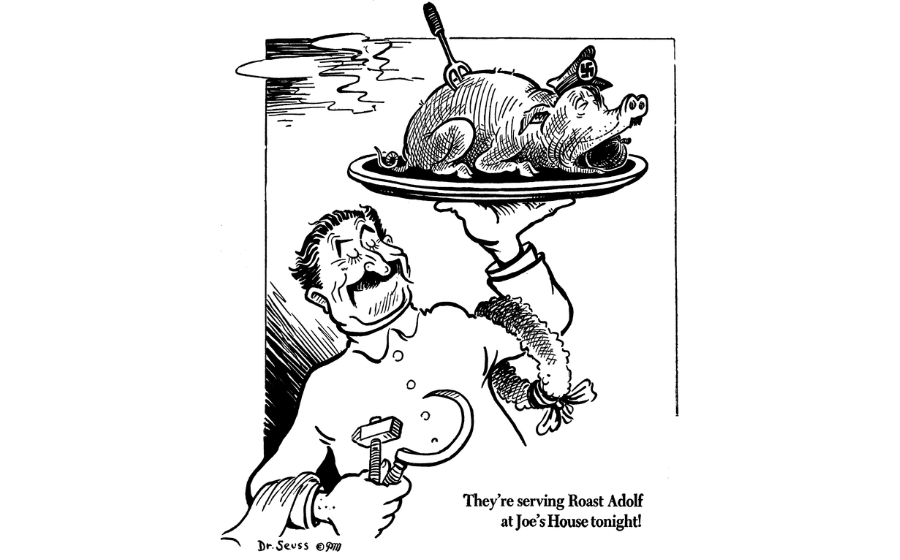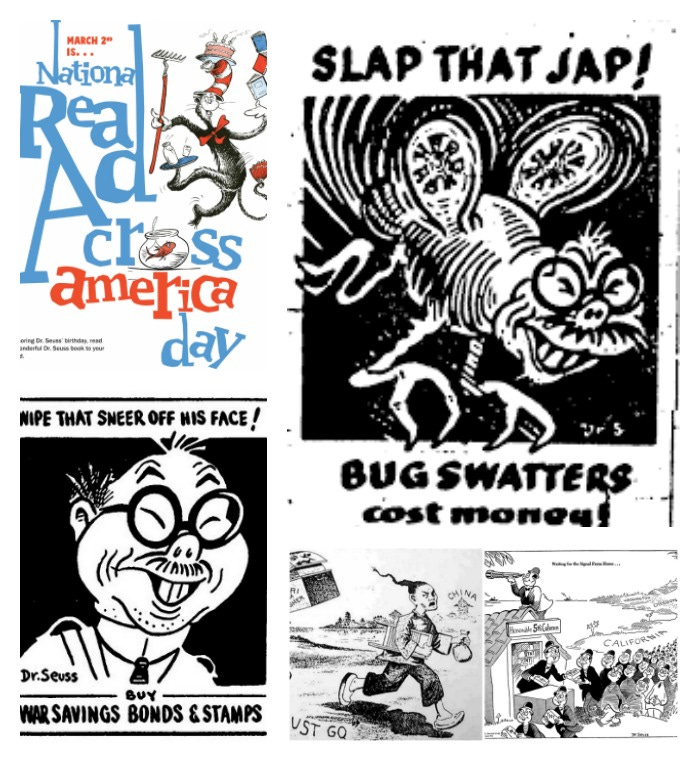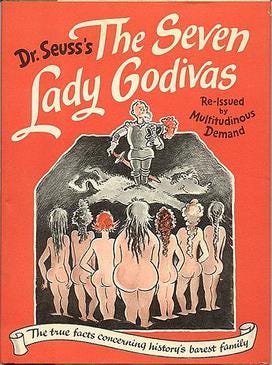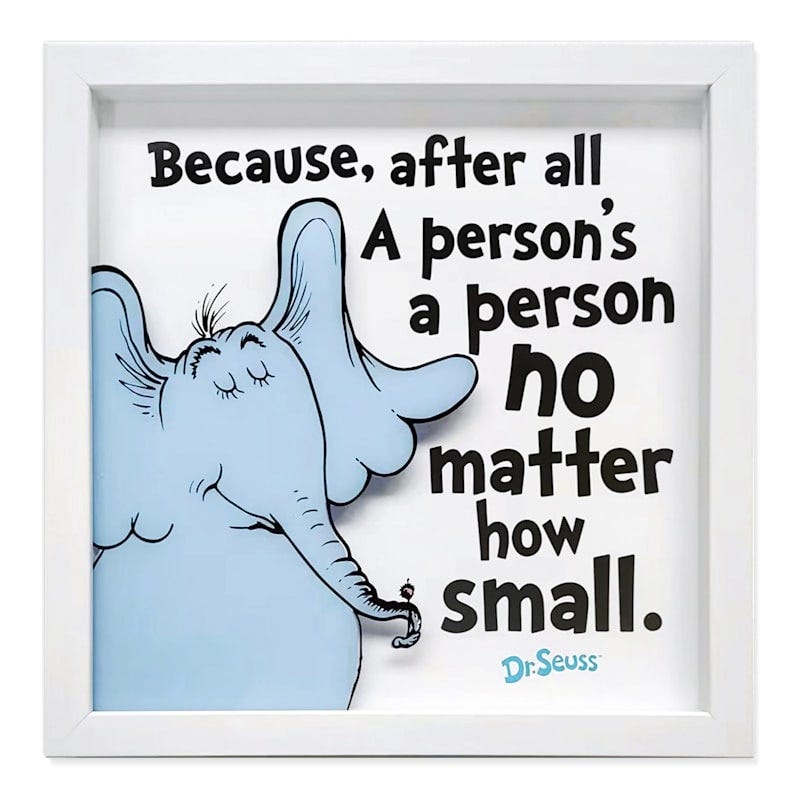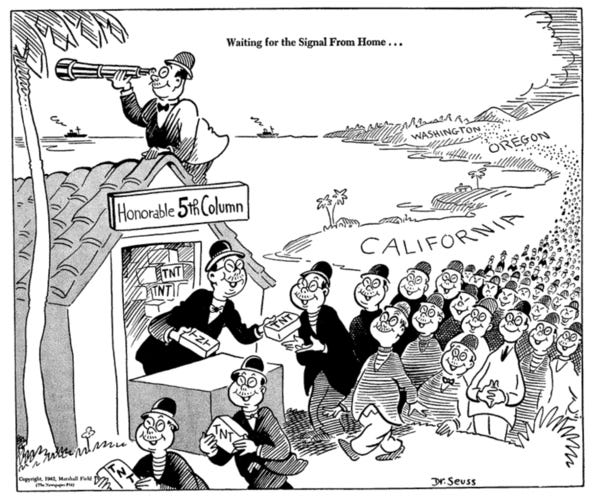Dr. Seuss's Political Cartoons
Who wants to see Dr. Seuss drawing swastikas? (it's not just Kanye!)
You'll get mixed up, of course,
As you already know.
You'll get mixed up
With many strange birds as you go.
So be sure when you step.
Step with care and great tact
And remember that Life's
A great balancing act.
Just never forget to be dexterous and deft.
And never mix up your right foot with your left.
-Dr. Seuss
Show of hands: who knew Dr. Seuss’s first book was…
And that he made a go at his cartooning career by selling insecticide? (Though he was previously publishing cartoons in Dartmouth papers in college.)
Well back in the runup to the second world war, our buddy Dr. Seuss was a political cartoonist. Very much not in favor of Charles Lindbergh’s America First movement.
And he might not have been the most subtle. But cartoonists usually aren’t, they sort of have to convey a point at a glance to an audience who is at best midbrow.
These days, we mostly use memes and social media for the same purpose.
During the war his designs were used to sell war bonds, and as general propaganda against the Axis.
And Seuss was rather fond of Uncle Joe Stalin.
And when looking back through the lens of history there’s a lot of complaint that his caricatures of Japanese characters (and more broadly, Asian characters) are very formulaic and racist. Though this is far from unusual for the time, and might be just taken as the typical caricature oversimplification that draws everyone as shorthand. (I’ll link you to My Favorite Martian, but not inline it, as that’s definitely not Dr. Seuss.)
So after the war Seuss went back to his children’s books. (He’d written a few of the ones we know today before the Second World War: And to Think That I Saw It on Mulberry Street, The 500 Hats of Bartholomew Cubbins, The King's Stilts, and The Seven Lady Godivas.
Also, there was Horton Hatches The Egg, in 1940. But mostly, he paused, for the war, to write his political cartoons.
And if you saw buttons like this on pro-life sites or protestors, the Seuss estate didn’t approve.

After the war, Dr. Seuss moved to California, and wrote children’s books. Interestingly, he and his wife never had kids (nor did he once he remarried, his first wife took her own life in 1967) but he often answer the question about children: "You have 'em; I'll entertain 'em."
His childrens books often have themes, as much as Seuss liked to claim that he didn’t like to moralize in his stories.
Geisel was a Democrat - by most account, a liberal Democrat even for the era - and a supporter of President Franklin D. Roosevelt and the New Deal. He was consistent in his political views throughout the Second World War and largely through his life; he was opposed to fascism, similarly opposed to the America First movement, and warmly supportive of Stalin and the USSR. He supported the internment of Japanese Americans during World War II in order to prevent possible sabotage and opposed pacifism or isolationism.
At the time he said
If we want to win, we've got to kill Japs, whether it depresses (famous pacifist) John Haynes Holmes or not. We can get palsy-walsy afterward with those that are left.
He had a harder time advocating violence once it was against the Soviets, though, as his famous book (and eventually television short) The Butter Battle Book eventually played on fears of the arms race and nuclear war, or just because of his own sympathies for the Communist ideologies.
For those interested in more, Amazon has (and I recommend)
a collection of world war 2 political cartoons Dr Seuss Goes To War
and possibly The Seven Lady Godivas which is at least an entertaining prank gift

